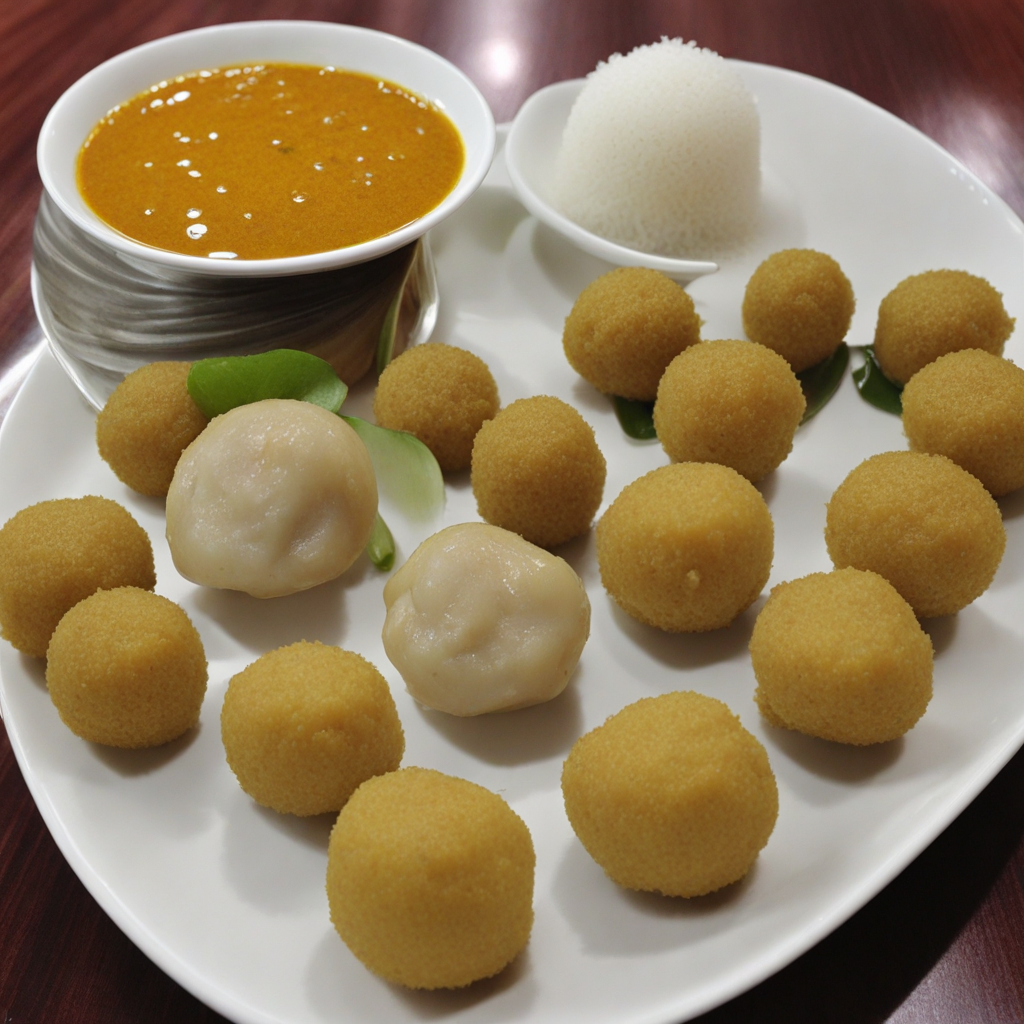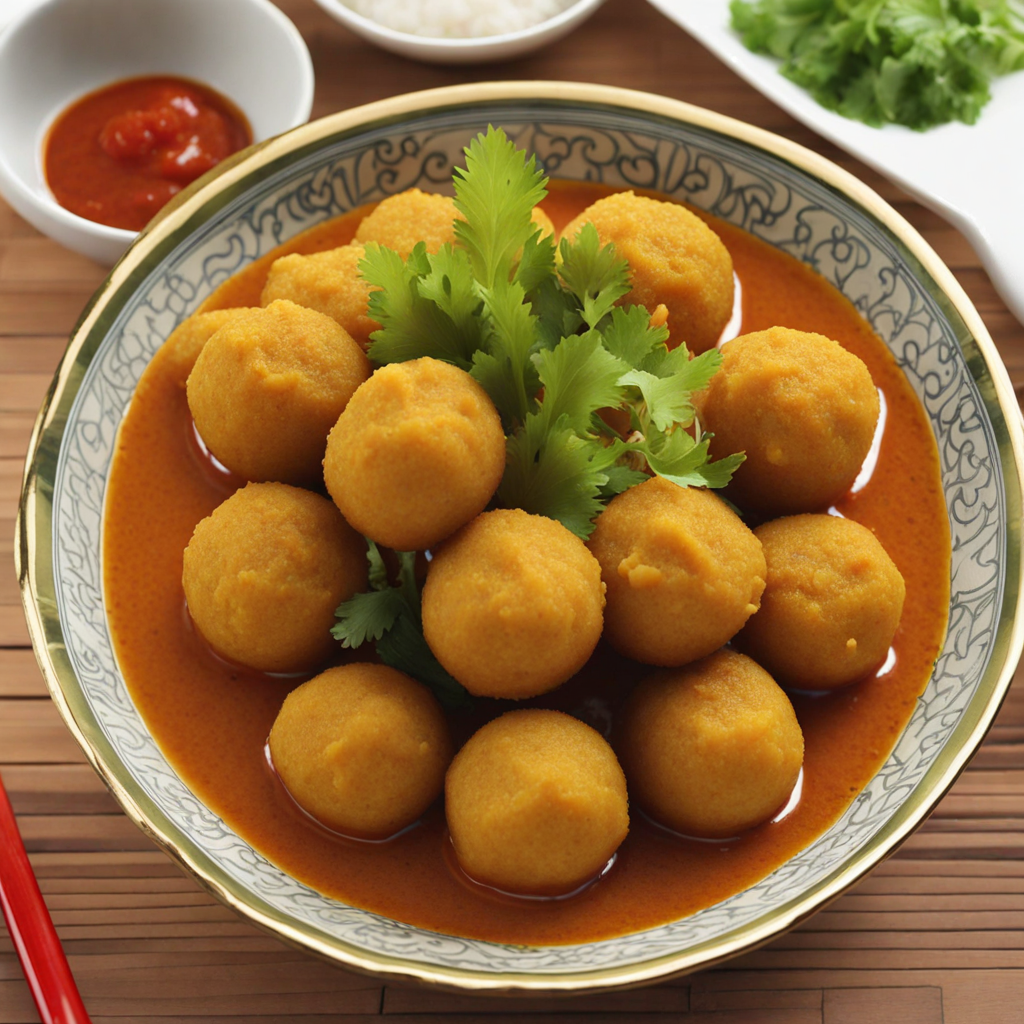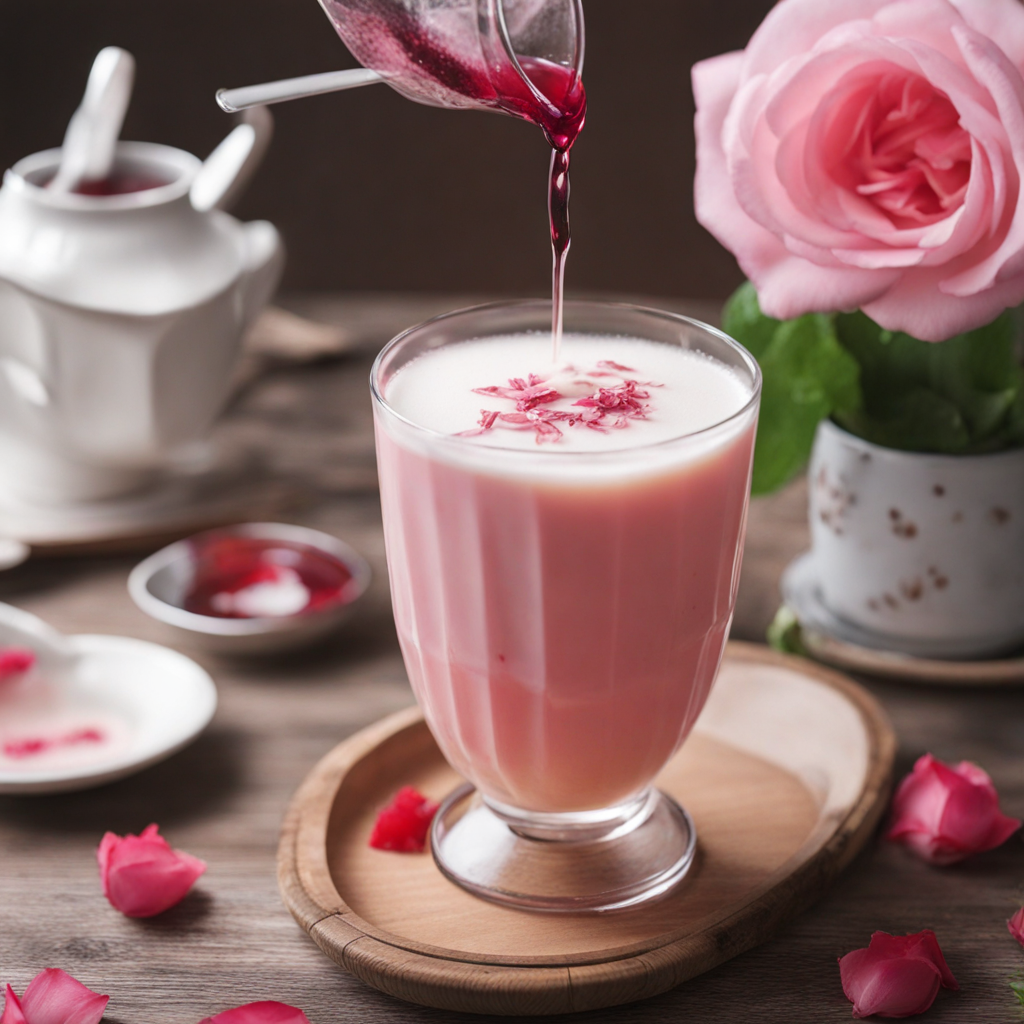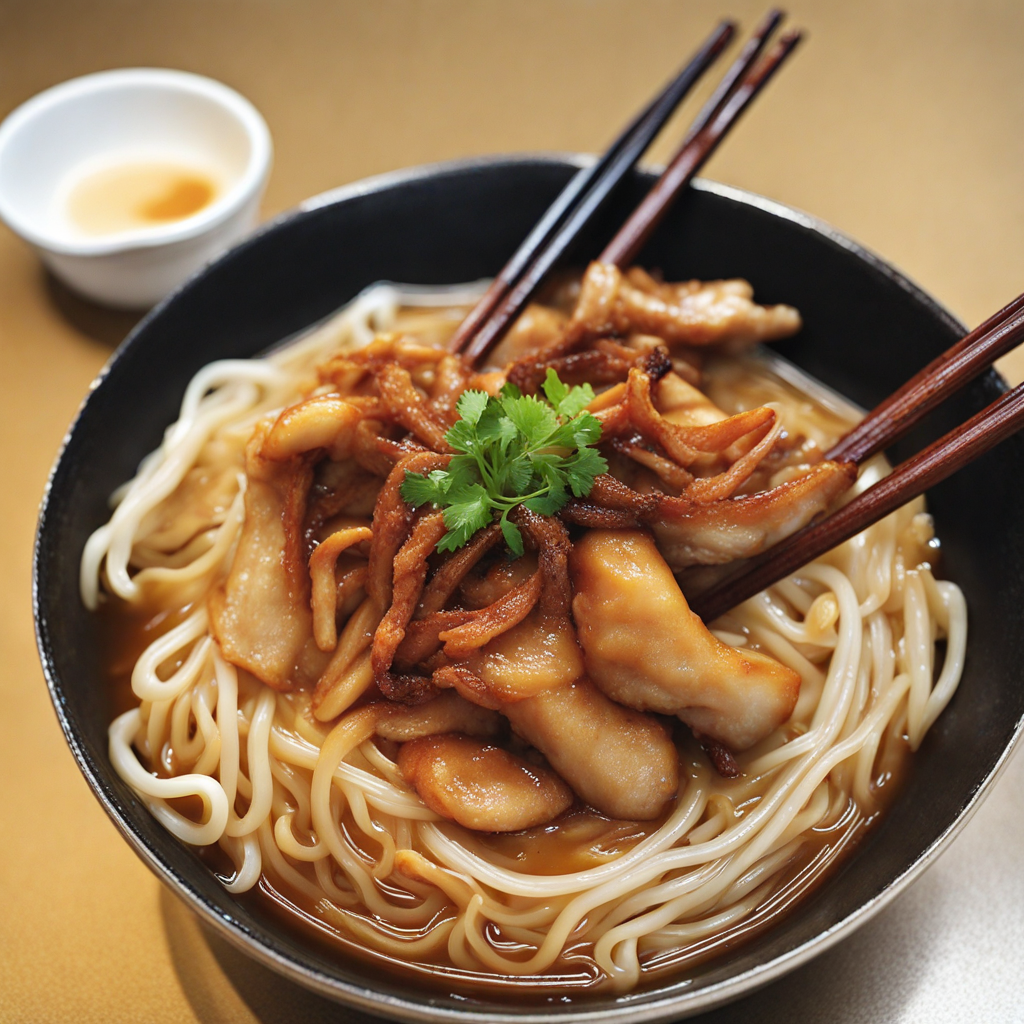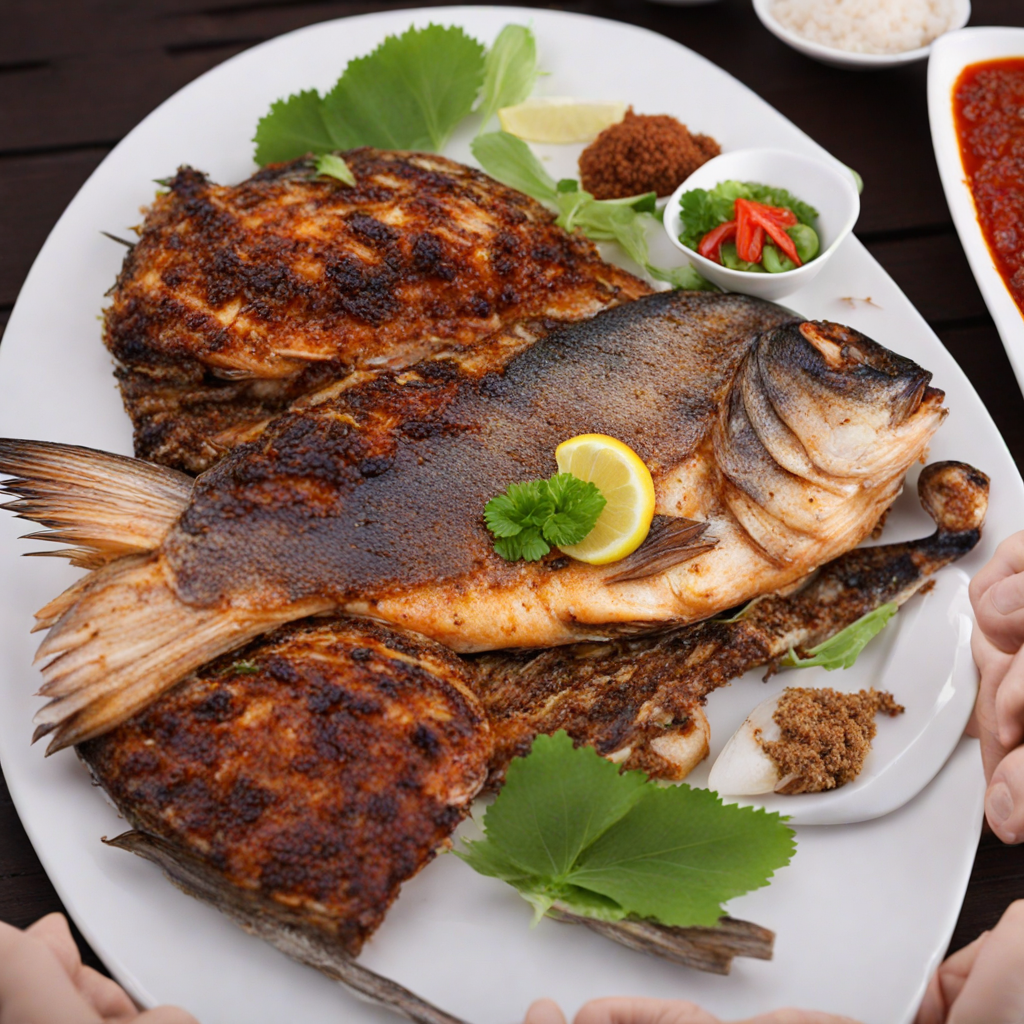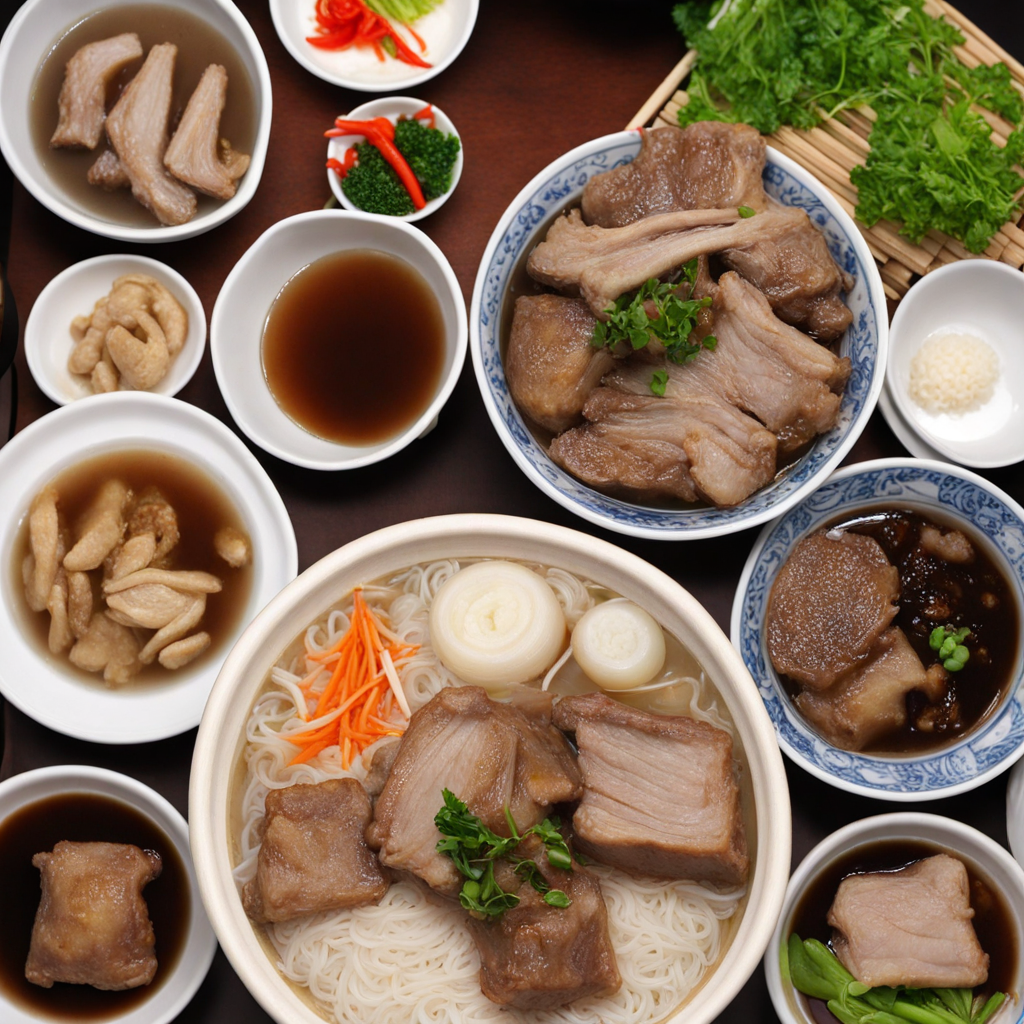Curry Fish Ball
Curry Fish Ball is a delightful street food dish that captures the essence of Singapore's vibrant culinary scene. These bite-sized morsels are made from fish paste, usually derived from a blend of minced fish, starch, and seasonings, which are then shaped into small balls. The fish balls are typically boiled or steamed until they achieve a bouncy texture, making them a satisfying treat to bite into. Their neutral flavor acts as a perfect canvas for the vibrant curry sauce that accompanies them, allowing the dish to shine with aromatic spices and rich flavors.
The curry sauce is what truly elevates Curry Fish Ball to a new level of indulgence. It is usually a thick, fragrant concoction made from a blend of coconut milk, curry powder, and a medley of spices such as turmeric, cumin, and chili. This sauce is both creamy and slightly spicy, enveloping each fish ball and imparting a warm, comforting flavor profile that is reminiscent of traditional Southeast Asian curries. The heat level can vary, but it generally offers a pleasant kick that enhances the overall experience without overwhelming the palate.
How It Became This Dish
The Story of 咖喱鱼蛋 (Curry Fish Balls) in Singapore: A Culinary Journey Origins Curry fish balls, known as 咖喱鱼蛋 (kā lǐ yú dàn) in Mandarin, are a beloved street food staple in Singapore, reflecting the city's rich multicultural tapestry. The origins of this dish can be traced back to the convergence of Chinese, Malay, and Indian culinary traditions, which have historically influenced Singaporean cuisine. Fish balls themselves have a long history in Chinese cooking, particularly in Southern China, where they are made from fish paste that is molded into small, round shapes. The arrival of Chinese immigrants in Singapore during the 19th and early 20th centuries brought these culinary traditions with them. However, it was the introduction of curry—a spice blend that has its roots in Indian cooking—that transformed the humble fish ball into a vibrant street food dish. The use of curry in Singaporean cuisine is a testament to the historical trade routes and migration patterns that have made the island a melting pot of cultures. Indian merchants and laborers brought spices and cooking techniques that would eventually mingle with the local ingredients and Chinese culinary practices. It is this fusion that gave rise to the iconic dish of curry fish balls. Cultural Significance Curry fish balls are more than just a quick snack; they symbolize the casual, communal dining culture that defines much of Singaporean life. Found in hawker centers and roadside stalls, these savory treats have become a quintessential part of the local food landscape. Their accessibility and affordability make them popular among people from all walks of life, and they are often enjoyed as a snack on the go or as part of a larger meal. The dish also encapsulates the spirit of innovation and adaptation prevalent in Singapore’s culinary scene. While traditional curry fish balls typically feature a rich, spicy curry sauce, vendors have experimented with various flavor profiles, incorporating local ingredients such as coconut milk, sambal, and even durian in some modern interpretations. This adaptability reflects Singapore's dynamic food culture, where chefs and hawkers continuously evolve traditional recipes to cater to contemporary tastes. Development Over Time The evolution of curry fish balls in Singapore can be seen through the lens of its social and economic changes over the decades. Initially sold by street vendors, the dish gained popularity in the 1970s and 1980s as Singapore’s hawker culture flourished. Hawker centers became community hubs where people gathered to enjoy affordable and diverse food offerings. Curry fish balls, often served on skewers, became synonymous with street food culture, appealing to busy workers, students, and families alike. During this period, the dish began to diversify significantly. While traditional curry fish balls were typically served in a spicy, thick gravy, hawkers started to offer variations, such as curry fish balls in soup, or paired with noodles. This flexibility in preparation allowed the dish to cater to different palates, including those who preferred milder flavors or gluten-free options. The 1990s brought further changes as globalization introduced new culinary influences and a growing number of food enthusiasts began to explore more exotic flavors. The rise of food bloggers and social media in the early 2000s propelled local dishes like curry fish balls into the limelight, with vendors showcasing their unique takes on the dish. This phenomenon gave birth to a wave of gourmet versions, where artisanal ingredients and methods were employed to elevate the humble curry fish ball into a trendy culinary offering. In recent years, the emergence of food delivery services and a growing interest in food culture among younger generations have further cemented curry fish balls as a staple. Many hawkers have adapted to these changes by packaging their offerings for home delivery, ensuring that the dish remains a beloved choice even in the age of convenience. The Modern Scene Today, curry fish balls are a must-try for anyone visiting Singapore. They are typically served with a side of toothpicks for easy eating, and the dish is characterized by its rich, aromatic curry sauce that can range from mildly spicy to fierily hot. The fish balls themselves are often made from a mix of fish paste and starch, giving them a chewy texture that complements the saucy curry. In addition to traditional curry fish balls, the dish has inspired a wave of creativity among hawkers and chefs alike. Variants such as curry chicken balls, vegetarian curry balls, and even fusion versions incorporating local flavors like laksa have emerged, showcasing how culinary traditions can evolve while still paying homage to their roots. Curry fish balls have also found their way onto the menus of modern eateries and cafes, where they are presented alongside contemporary dishes and craft beverages, attracting a younger crowd. This trend signifies not just a resurgence of interest in local cuisine but also a broader appreciation for the history and culture behind these dishes. Conclusion Curry fish balls are a delicious reflection of Singapore's rich culinary heritage, representing a harmonious blend of various cultural influences. From their origins rooted in the traditions of Chinese fish ball making and Indian curry, to their evolution as a beloved street food, curry fish balls have become an integral part of Singapore’s food identity. As Singapore continues to grow and change, so too will curry fish balls, adapting to new tastes and trends while still retaining their essence as a beloved local snack. Whether enjoyed at a bustling hawker center or a trendy cafe, curry fish balls remain a testament to the enduring power of food to connect people, celebrate culture, and tell stories of a vibrant community.
You may like
Discover local flavors from Singapore


